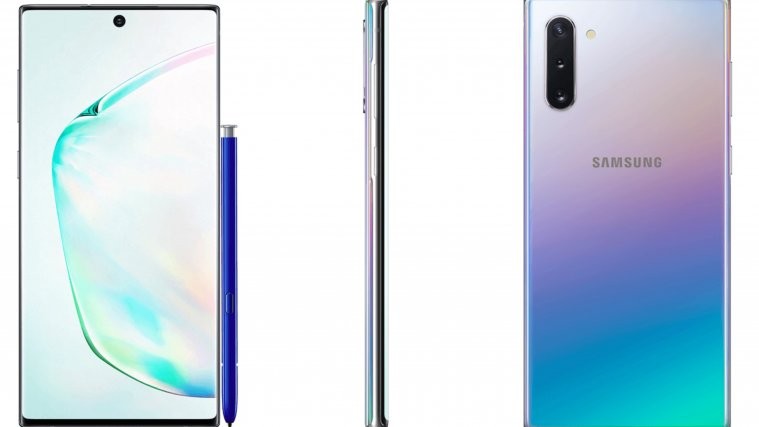During its Tech Summit in Hawaii this week, Qualcomm unveiled its latest-generation premium mobile processor, the Snapdragon 855. The chipset is the direct successor of last year’s Snapdragon 845, and we’re going to see it powering most of the flagship devices coming in 2019.
The newcomer is a 7nm chip, like Huawei’s Kirin 980 and Qualcomm has improved nearly every aspect of the SoC, compared to its predecessor, so we have lot of things to tell you about it.
So without further ado, here’s everything that’s new with the Snapdragon 855.
Power, performance and gaming
Obviously, the Snapdragon 855 brings with it better performance. This is usually measured by the CPU+GPU combo, and on the new chip, there’s a Kyro 485 CPU and Adreno 640 GPU doing the heavy lifting.
The CPU promises up to 45% improved performance over the previous generation. To achieve that, Qualcomm has significantly altered the architecture. So even though we’re still looking at an octa-core processor, there’s now one main Prime Core for maximum performance running at 2.4GHz, combined with three Performance cores each running at 2.42GHz. Completing the design are four Efficiency Cores, each running at 1.8GHz.

Qualcomm notes that each of these cores has its own L2 cache, while all share an L3 cache. This gives the new chip the flexibility to deliver more power when needed.
Next, the GPU scores an overall 20% performance increase too. Qualcomm also added second-generation HDR support for HDR10+ and Dolby Vision.

The new chip also offers important upgrades for gamers including support for 120fps playback. What’s more, the Snapdragon 855 can decode 8K / 360-degree VR video for an advanced VR experience.
But that’s not all, the Snapdragon 855 will usher gamers into a new era of mobile gaming, as Qualcomm has introduced the new Snapdragon Elite Gaming Platform. This brings over things like cinematic color grading in HDR, filmic tone mapping, Vulkan 1.1 graphics library support with physical based rendering (PBR).
The former allows designers to render an object based on the virtual materials they are made of. According to Qualcomm, this alone can provide up to 20% performance improvement. It’s the first time something like this has been available on mobile, and the potential for improving gaming on the go is huge.
5G

Since it’s becoming increasingly clear that 2019 will be the year of 5G wireless connectivity (at least for those living in the US), Qualcomm’s new Snapdragon 855 platform puts a big emphasis on 5G connectivity.
Snapdragon 855 chips will take advantage of an X24 Cat 20 modem which promises speeds of up to 2Gbps (at least in theory), but manufacturers who wish to offer 5G smartphones will be allowed to opt to also have the 5G-ready X50 modem, as a separate part.
Obviously, 5G availability will be limited at first, although all major US carriers have 5G roadmaps, but it will certainly take some time before 5G becomes as ubiquitous as Gigabit LTE.
Related articles:
- Best phones at Verizon in 2018
- Best phones at AT&T in 2018
- Best phones at Sprint in 2018
- Best phones at T-Mobile in 2018
However, some manufacturers have already disclosed their intention of being among the first to launch 5G-ready smartphones including Samsung and OnePlus.
Artificial Intelligence (AI)
We’re hearing the term AI more than ever these days, especially in relation to smartphones. So of course that the Snapdragon 855 comes with some upgrades in this department too.
First, Qualcomm notes that the new chipset will offer important improvements when it comes to tasks that rely on neural network-assisted software. The chip maker has introduced its 4th generation AI engine which brings together the Adeno, Kyro and Hexagon processors to power AI tasks. Overall this amounts to a three-fold performance gain for all AI-related tasks.
What’s more, the Hexagon inside the AI engine employs real-time noise-reduction algorithms to cut background voice in video calls in certain environments (like airports). Qualcomm also invited Google on stage to talk about how the Hexagon’s performance improvement will also vastly reduce latency when using Google Translate.
The same Hexagon DSP will be used to power Qualcomm’s new 3D Sonic Sensor, an ultrasonic biometric sensor that will be placed underneath the display. So in 2019, we expect the in-display fingerprint systems to take off, especially in the West, where the only real option is the OnePlus 6T.
Camera and photography
The Snapdragon 855 is getting a new and upgraded Spectra 380 IPS (image signal processor), which handles stuff like noise reduction, autofocus, auto exposure and more. Qualcomm explains that with the new chip, computational processing like computer vision-powered portrait modes, AR/VR functions, and more are integrated straight into the ISP. This brings an important speed boost, but also power reduction for heavy tasks.
In the real world, this means Snapdragon 855 will be able to depth sensing at 60fps, which unlocks things like portrait mode previews in real time or portrait mode videos with real-time HDR with 4K resolution. The platform will also be capable to do background defocus in the video, but also to remove the whole background and replace it with something.
Related articles:
- Qualcomm Snapdragon 670 processor: all you need to know
- Huawei Kirin 710 vs Snapdragon 636 vs Snapdragon 660
- Complete GPU Turbo device list
- OnePlus 7: All we know so far
Moreover, Qualcomm has also built-in hardware acceleration for HEIF file format encoding/decoding. The chipmaker is making the jump from JPG to HEIF because the format can store details on HDR color, RAW data, computer vision data, and much more. On phones with multiple cameras like the LG V40 which has five, each sensor could be made capture an image simultaneously, and then all the shots would be combined together in a single HEIF. Note that Android 9 Pie added system-level support for HEIF too, which bodes well with Qualcomm’s announcement.
Last but not least, the upgrades mean that the camera won’t drain as much battery as it did before.
Seeing all the improvements, we can’t wait to see the first Snapdragon 855-powered smartphones make their way on the market. Perhaps we will even be able to see some prototypes as soon as CES 2019 in January?
Image credits: Phonearena, Android Police, Anandtech








